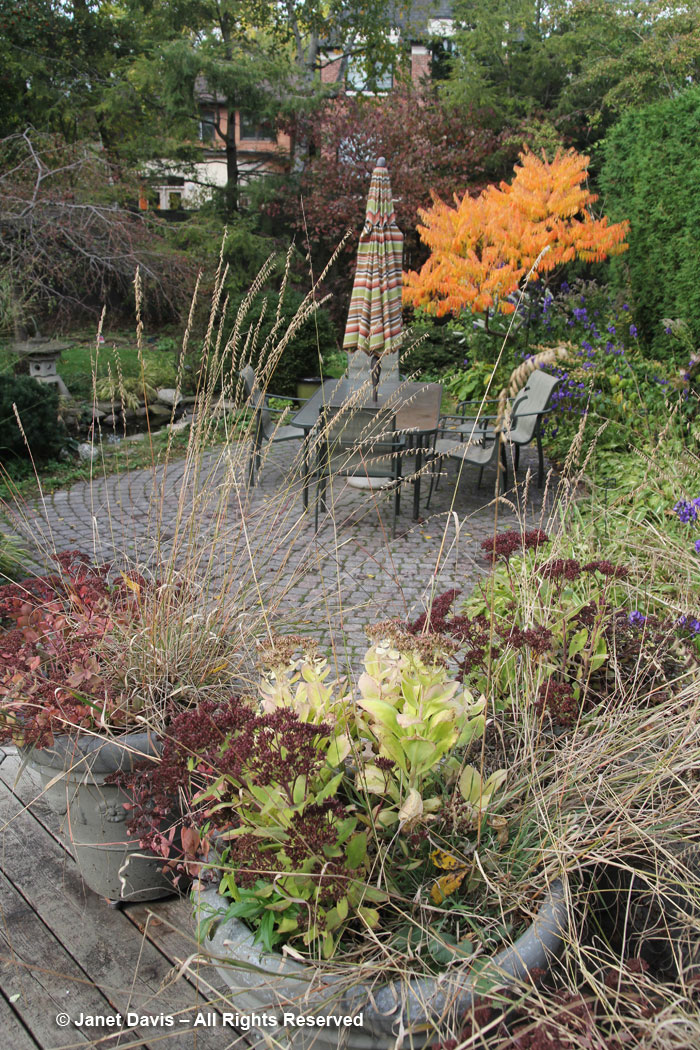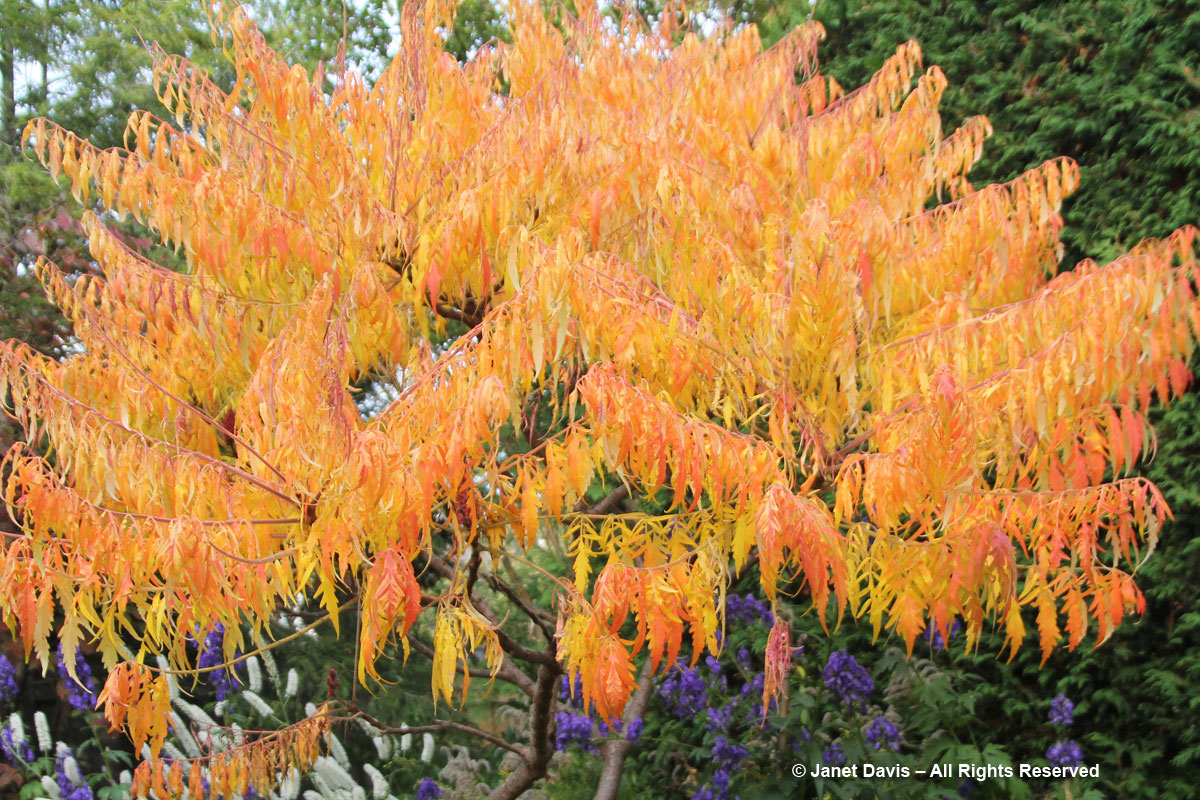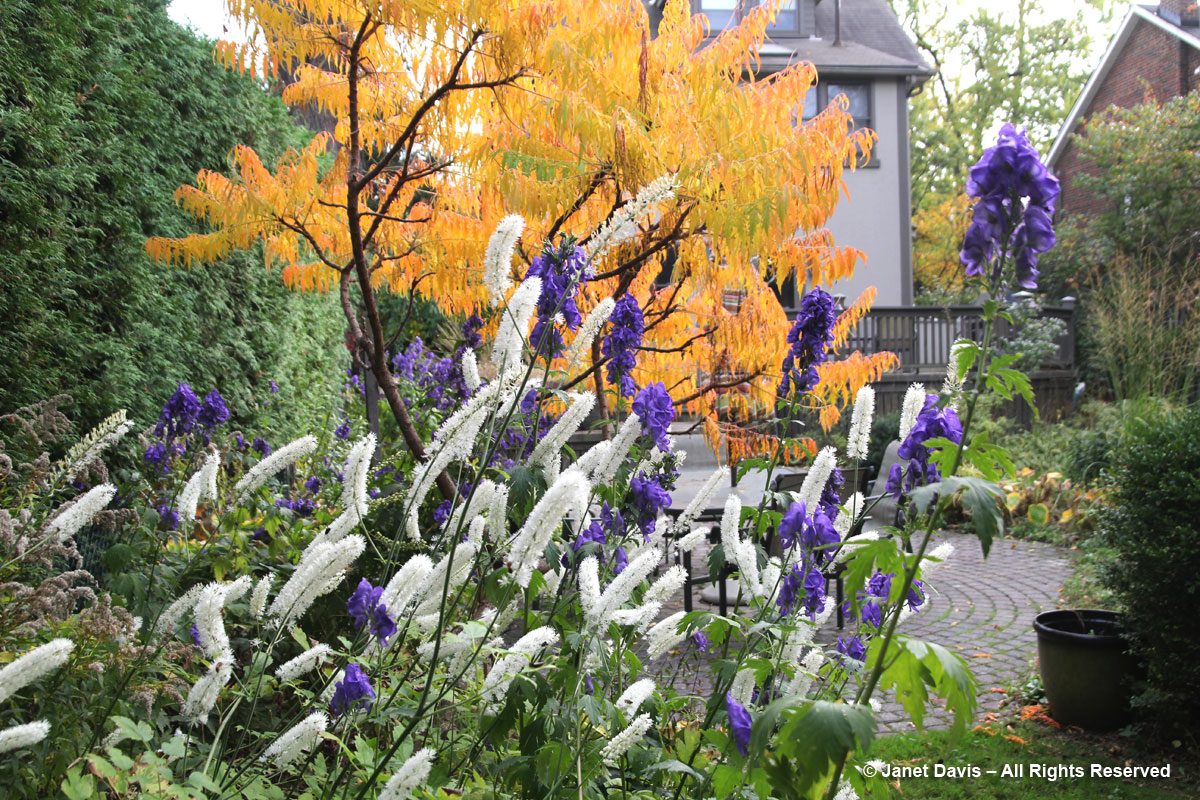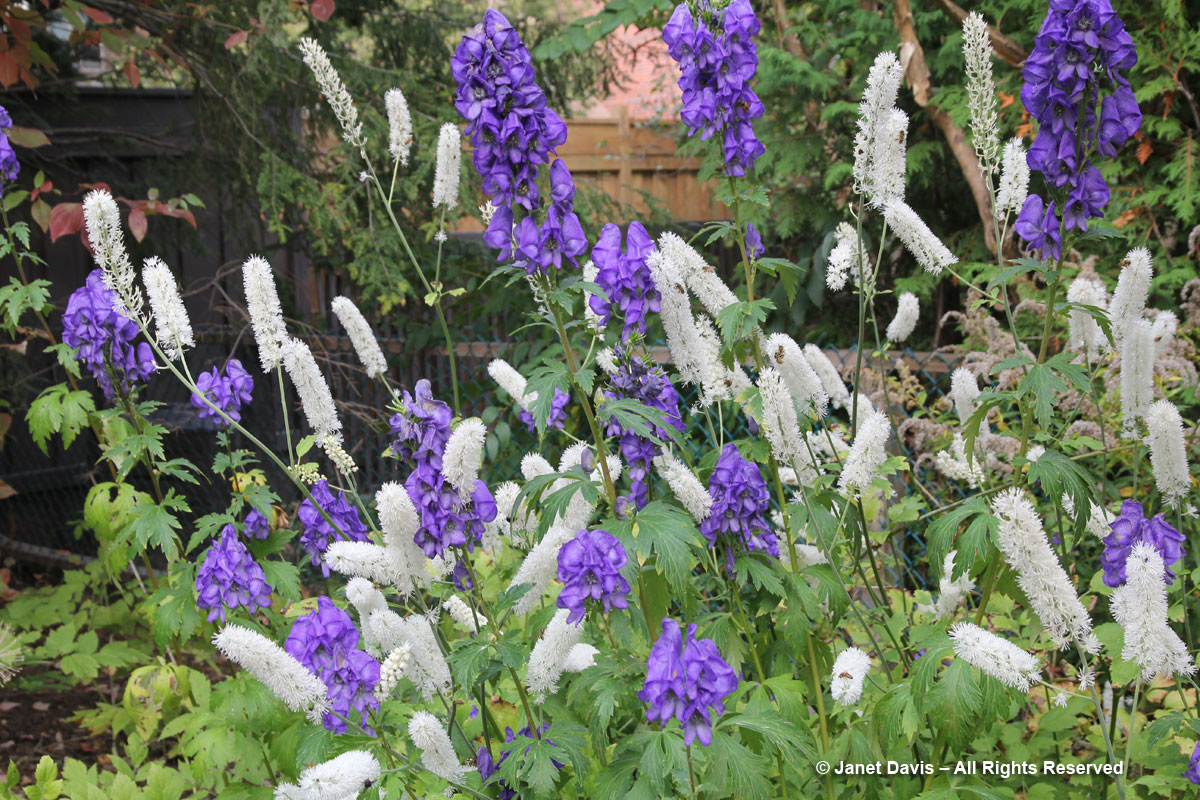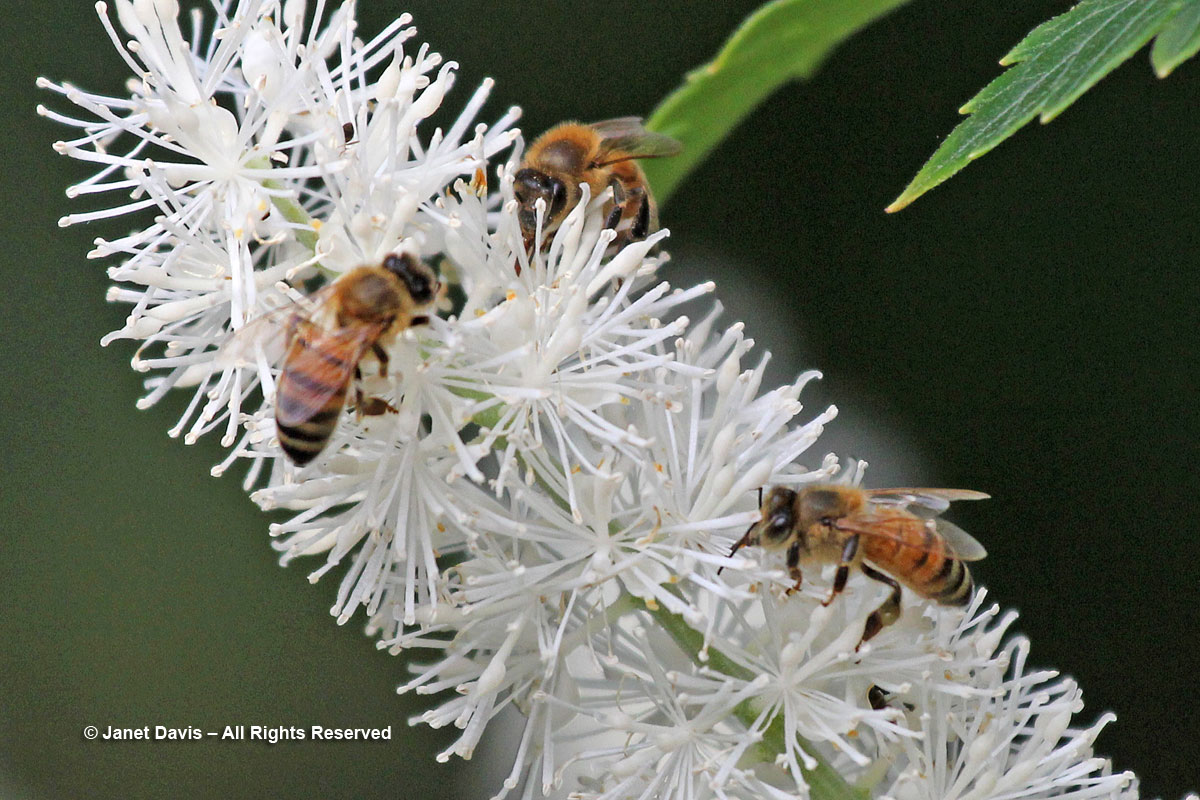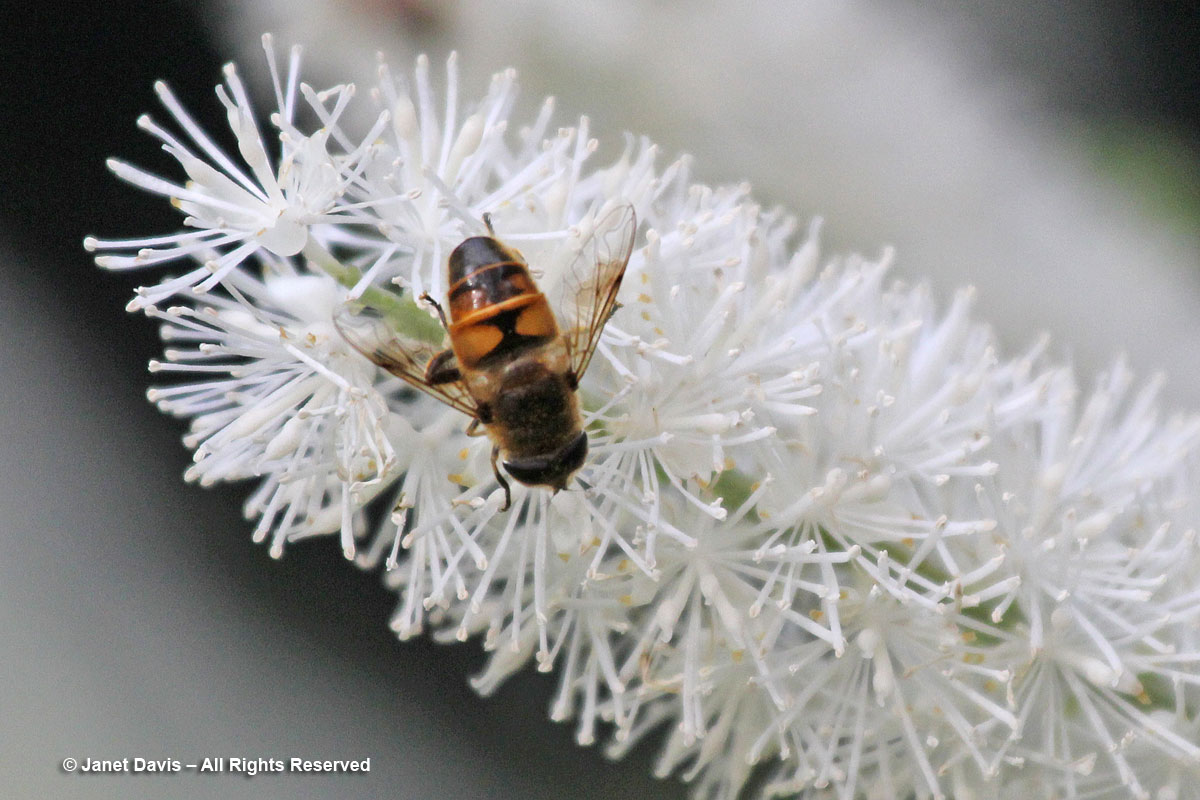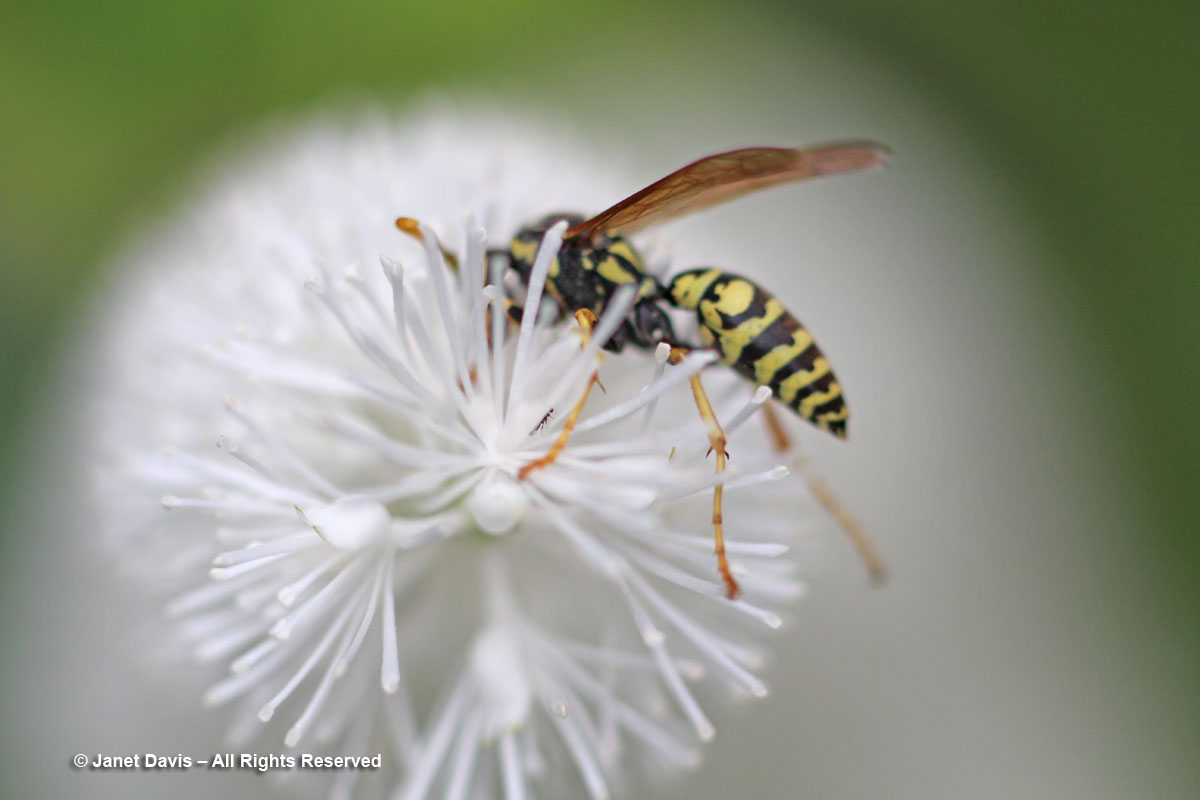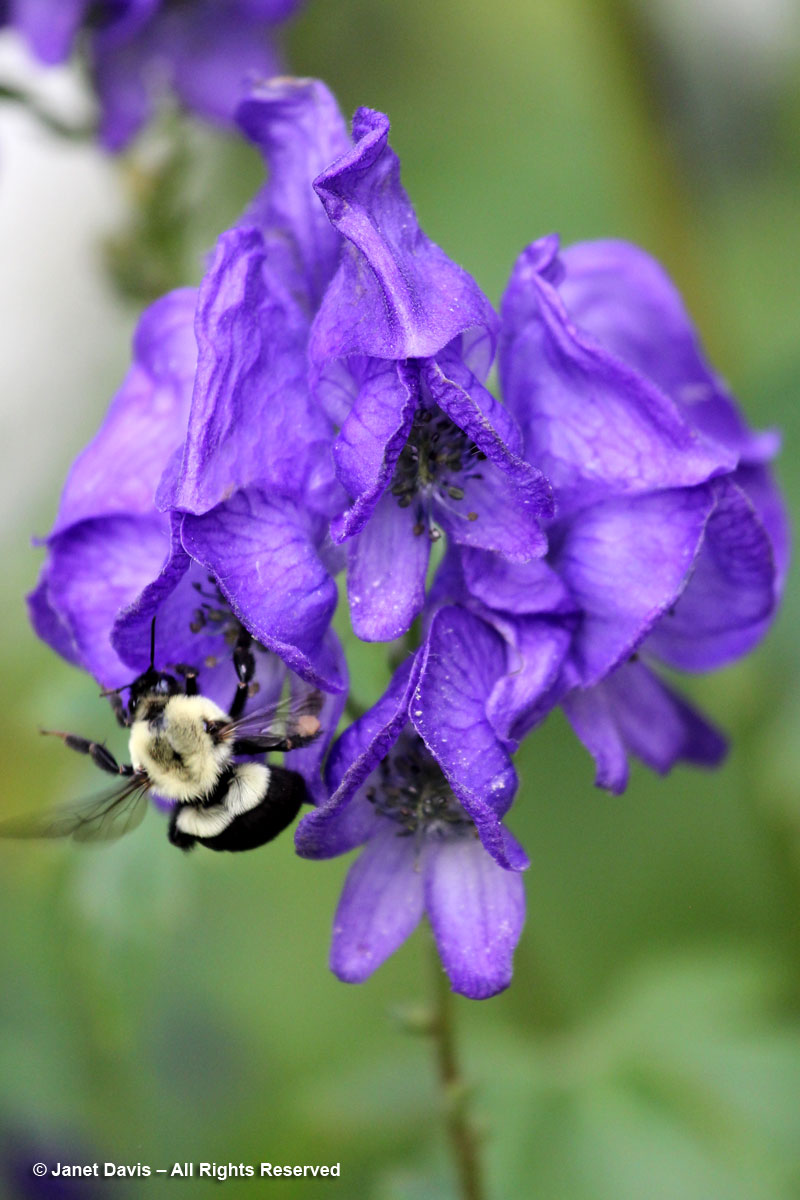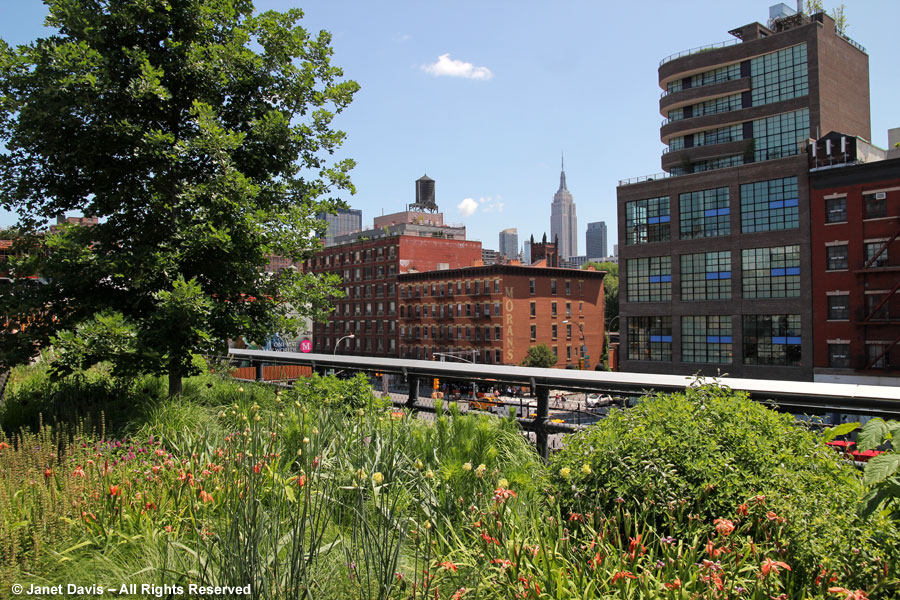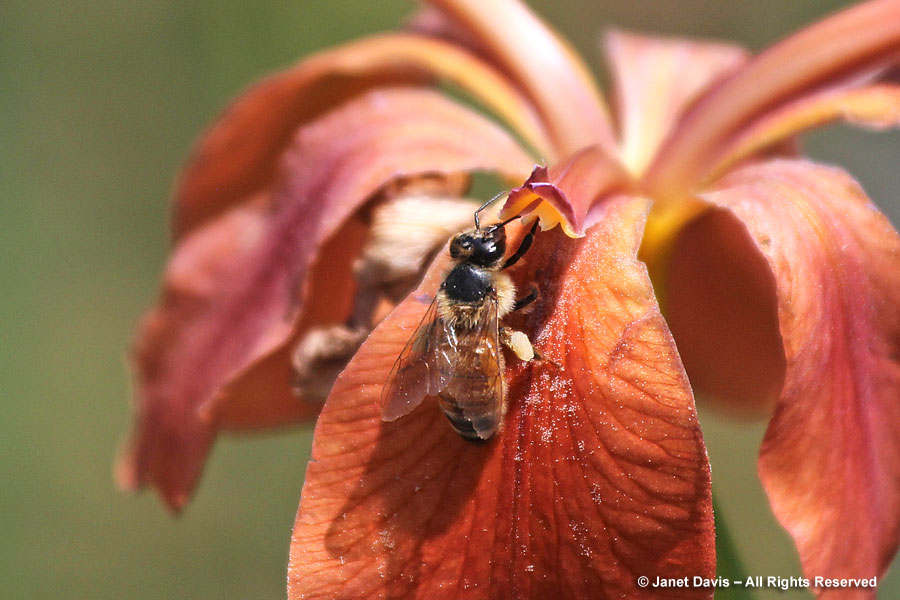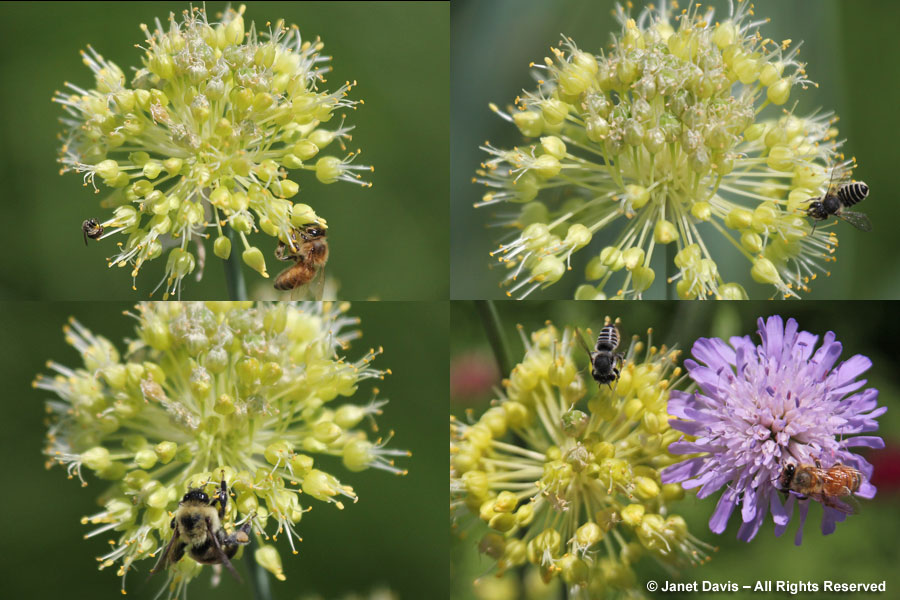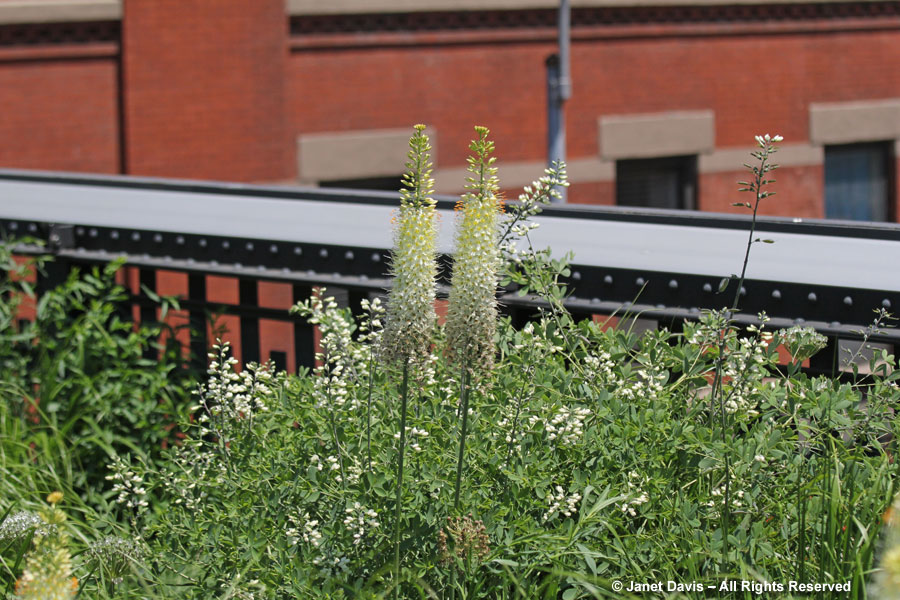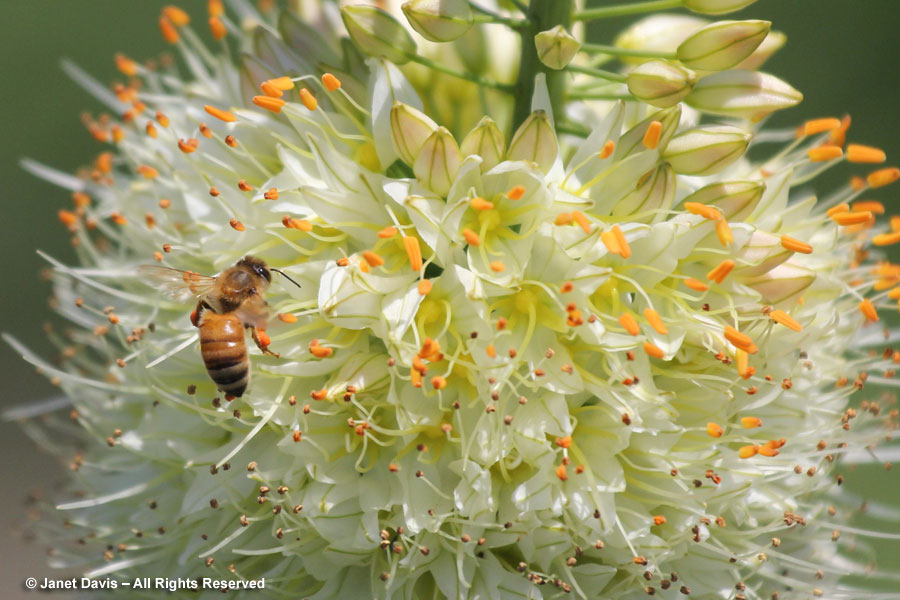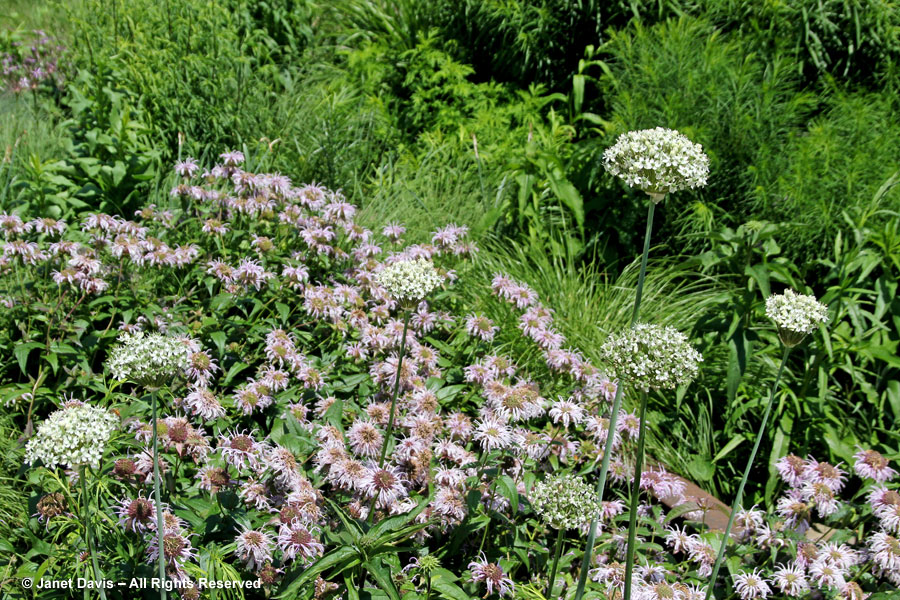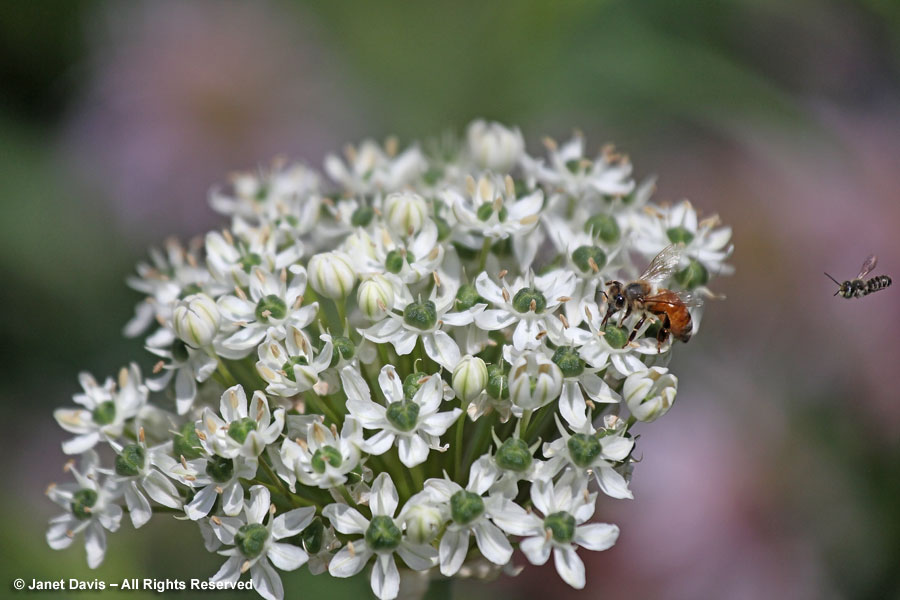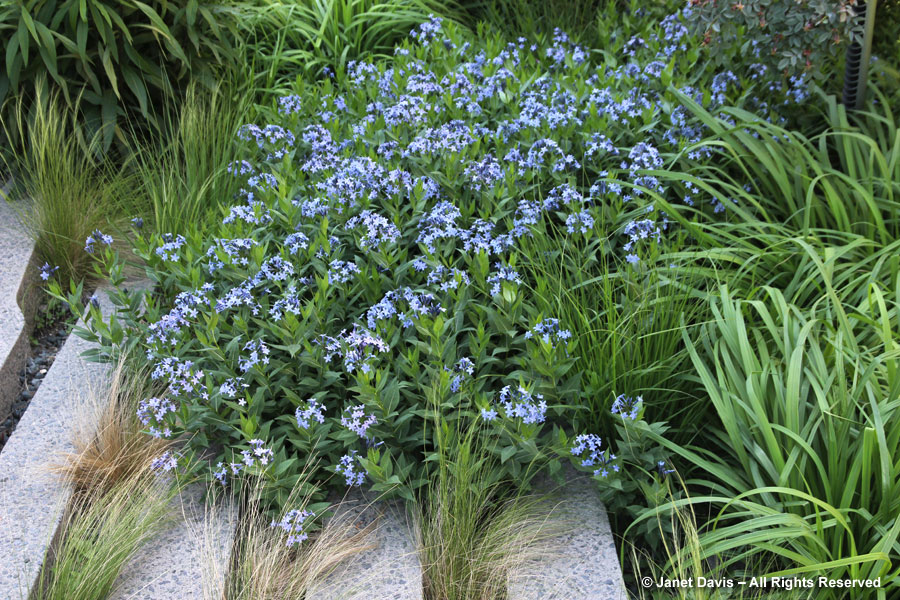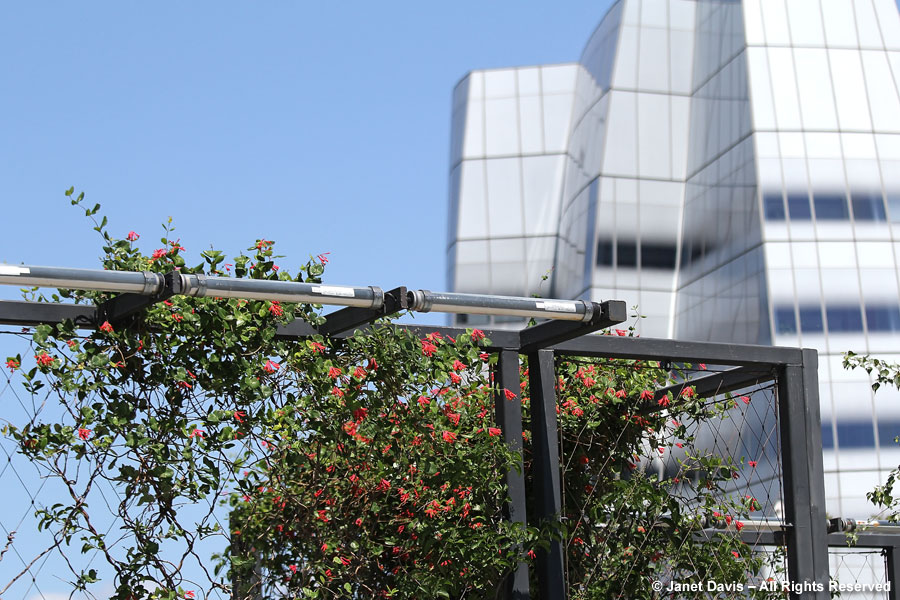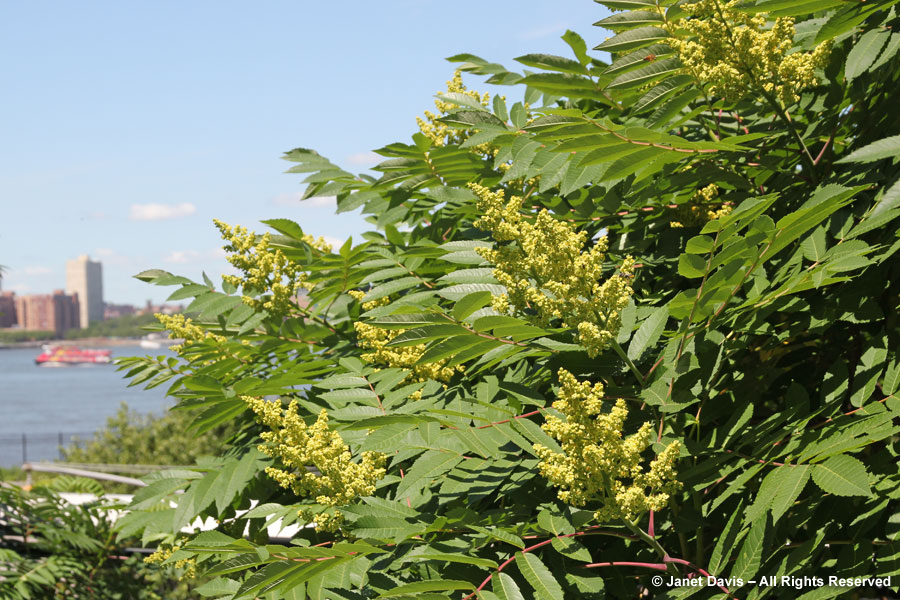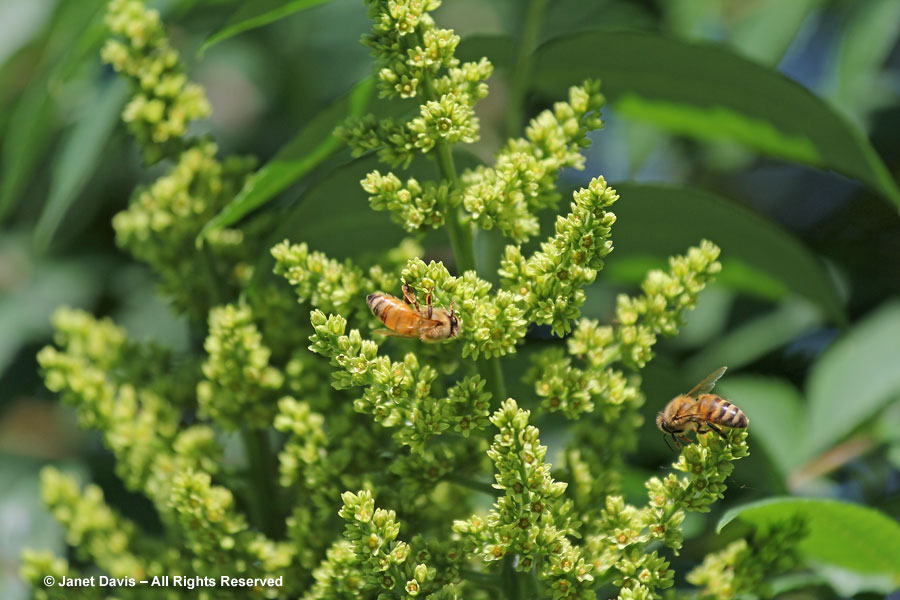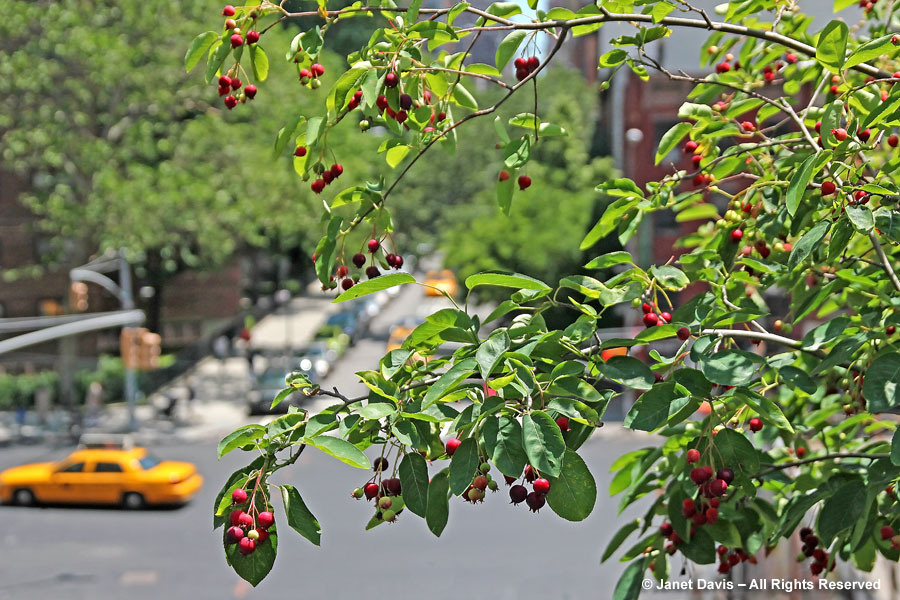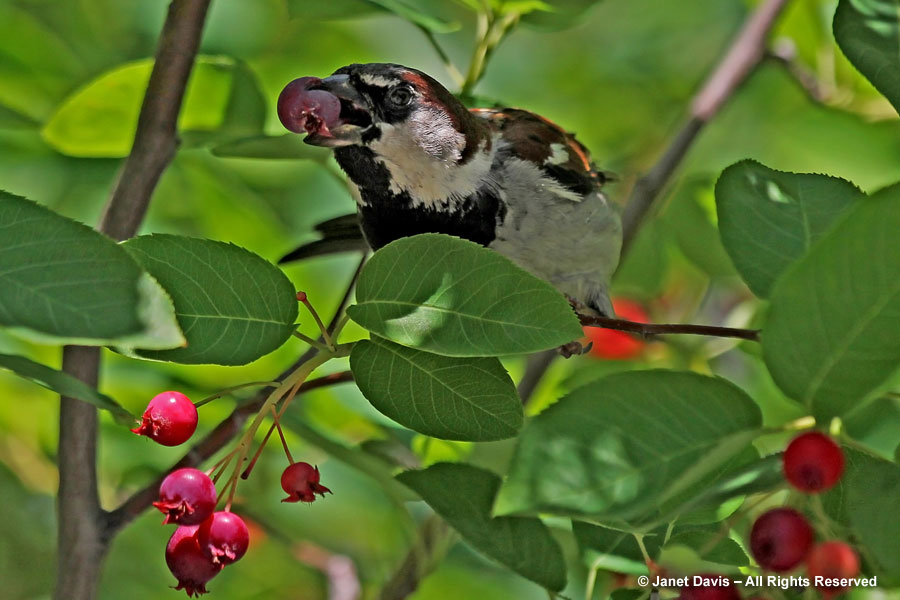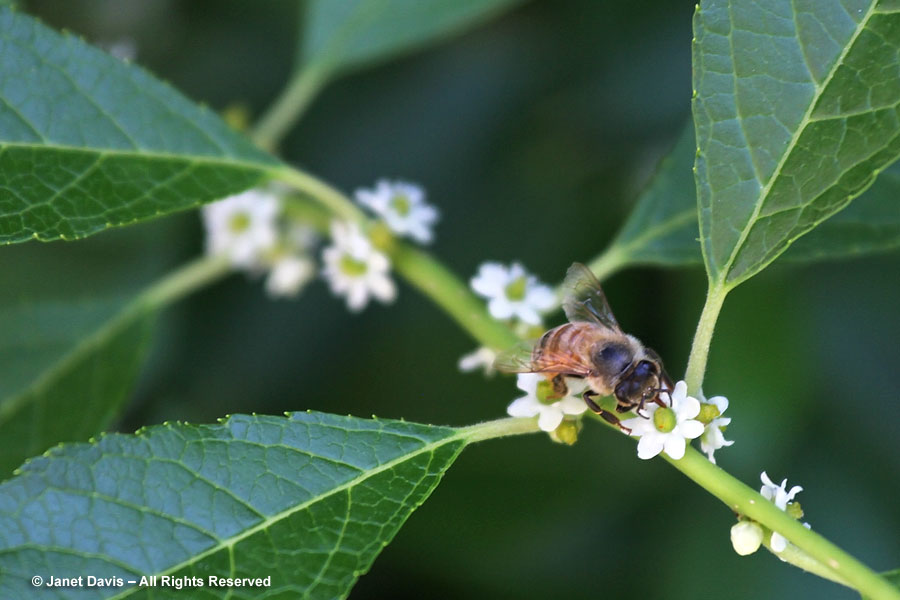What a luscious October afternoon! I looked out my back window and was drawn, as I always am this time in autumn, to the furthest corner of the garden, where a little fall scene unfolds that I treasure more because it’s a secret. Want to see it? Let’s take a little stroll past the messy pots on the deck with their various sedums and swishing sideoats grama (Bouteloua curtipendula) out into the garden past the table and chairs that haven’t been used since… when? August?
Keep going to where the lovely chartreuse Tiger Eyes sumac (Rhus typhina ‘Bailtiger’) is currently doing its Hollywood star thing in brilliant apricot…..
But what’s this scene, just behind it?
Yes, two stalwarts of the autumn garden – and I mean autumn, fall, October! Autumn monkshood (Aconitum carmichaelii ‘Arendsii’) and autumn snakeroot (Actaea simplex), aka fall bugbane. Each year, they flower at the same time, and enjoy identical conditions in my garden, i.e. the most moisture-retentive soil (lowest corner of the garden by a few inches), with reasonable midday sunshine but dappled shade a good portion of the day. The fragrance of the snakeroot is fabulous, something a little soft and incense-like, or reminiscent of talcum powder (in the nicest way). Colour-wise, I love blue and white, from the earliest anemones-with-scilla in April to this shimmering, assertive finale.
And did I mention pollinators? As in bumble bees of different species, honey bees……
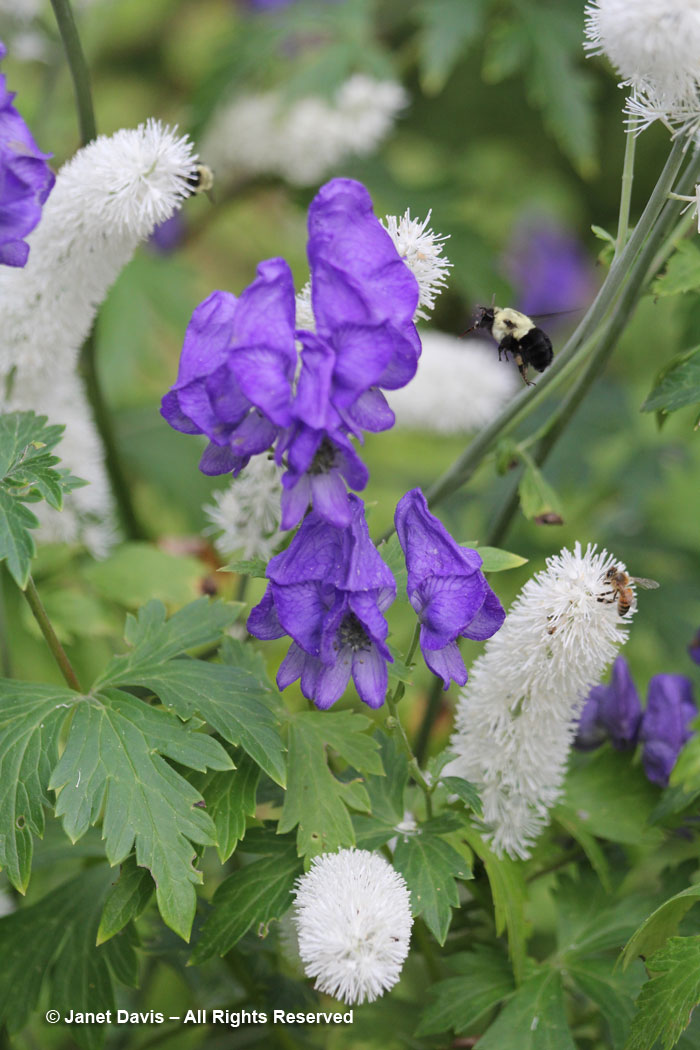
(WHO has the beehives near my house? I’d love to know)…..
……hover flies…..
….and paper wasps, below, as well as ants and cucumber beetles.
Monkshood is deadly poisonous, but its pollen seems to be an attraction for bumble bees and honey bees once the asters have finished up.
Finally, do note that the snakeroot is not any of those fancy-schmancy dark-leaved cultivars like ‘Brunette’, but the straight species with plain-Jane-green-foliage,. And that it used to be called Cimicifuga, but the gene sequencers have now moved it into Actaea. It is a lovely plant and should be used much, much more.

